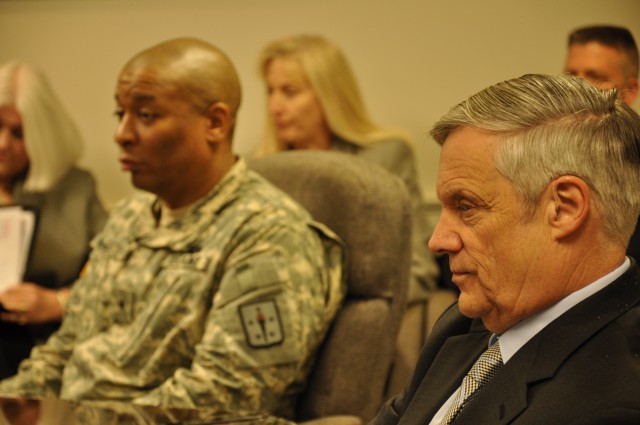
FORT JACKSON, S.C. -- Fort Jackson is a critical part of the Army's new and revolutionary Web-based business system called the General Fund Enterprise Business System.
The Army currently has dozens of separate financial, real property, asset and accounting management systems. GFEBS integrates more than 80 percent of those systems to create a single, authoritative source for financial and related non-financial data for the Army's entire General Fund.
Undersecretary of Defense (Comptroller) Robert Hale visited Fort Jackson's Soldier Support Institute last week to get an update on GFEBS and see first-hand how the system operates.
"The Impact of GFEBS is tremendous," said Col. Milton Sawyers, commandant of Fort Jackson's Financial Management School. "For the first time, we'll be able to produce an auditable financial statement for the Army. This goes a long way toward increasing our credibility with Congress, the media and the public."
Fort Jackson was one of the first installations to receive this new system. GFEBS has also been implemented at several other sites, including Fort Benning and Fort Stewart, both in Georgia.
"The transition from our legacy financial management systems to GFEBS is critically important," Sawyers said. "In fact, it is the Soldier Support Institute's number one priority."
The Financial Management School, part of the Soldier Support Institute, is responsible for ensuring sustainment training on GFEBS once the system reaches its full operational capability.
"We're very excited about GFEBS here at the Financial Management School," Sawyers said. "GFEBS impacts how we currently do business, therefore we are adapting our training to meet the needs of our future resource management workforce."
GFEBS is expected to make the Army much more efficient and cost effective.
Sawyers said GFEBS is much more than finance and accounting system. It is replacing business systems operated across the Army, allowing commanders to see how all resources, not just money, are being used and make cost-informed decisions.
"Where we're going in the Army," Sawyers said. " is toward fostering a cost culture so commanders at all levels can make resource-informed decisions.
"With GFEBS, we'll finally have the necessary tools needed to quickly pull and provide good, solid, relevant information that our senior leaders require to make resource-informed decisions. This is a huge win for the Army and the taxpaying citizens of our country."
GFEBS will subsume 90 financial management legacy systems, and analysis of another five is ongoing, said Dennis Davis, deputy commandant of the Financial Management School. Davis said GFEBS is expected to be fully fielded across the Army by January 2012.

Social Sharing